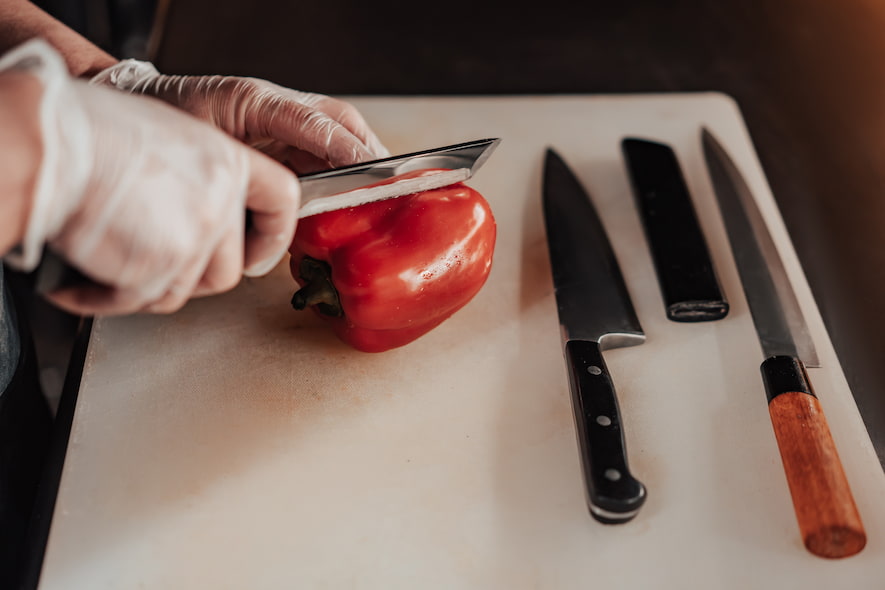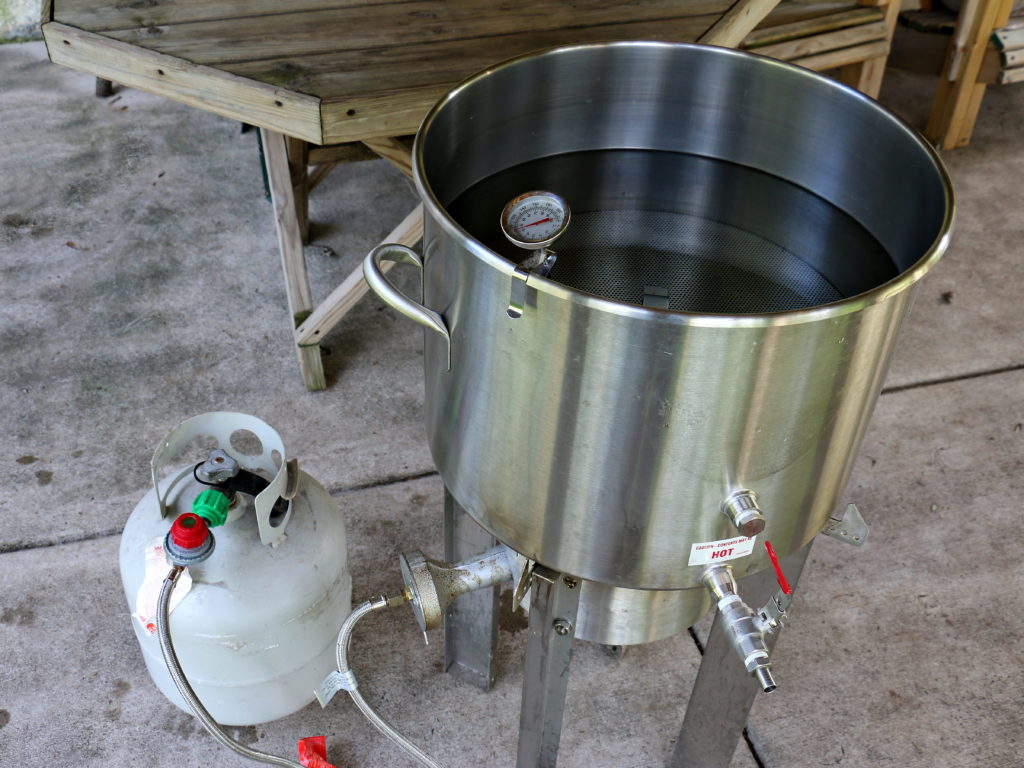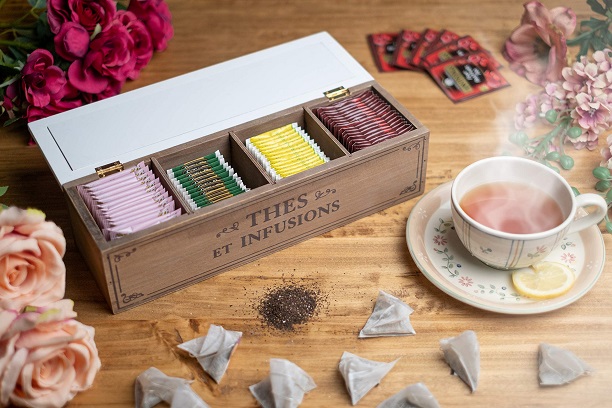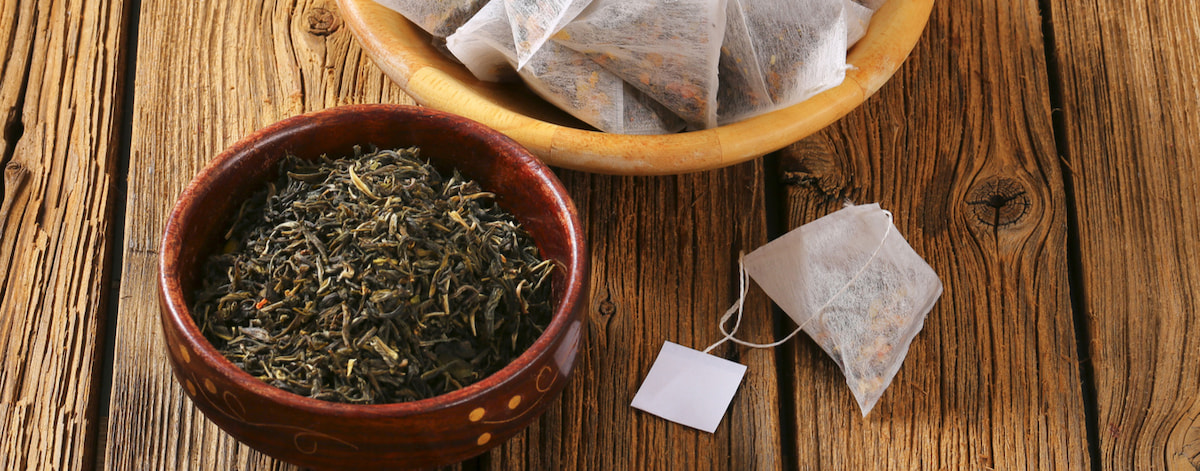Food & Drink
The Difference Between Nakiri and Santoku Knives
Stocking on the right kitchen essentials is one of the most important things you can do in order to ease food prep and cooking. In fact, the most important gear in the kitchen is a knife because without it you won’t be able to complete any kind of work.
Having a proper knife for cutting different types of food can certainly make your work faster and safer. That being said, let’s see the purpose of the two most commonly used knives in both commercial and residential kitchens.
What Is a Nakiri Knife?
This knife has appeared a long time ago in the 17th century when in Japan was forbidden and illegal to eat animals with four legs. So, at that time, the Japanese diet consisted of fish, rice and vegetables, and that was the time when this knife appeared. It was designed especially for cutting vegetables and its design hasn’t changed at all even after all these years.
It’s a lightweight and thin knife with a rectangular blade, straight edge and rounded square tips, perfect for cutting vegetables with straight up and down motions. As opposed to what we’re taught on TV to literally rock the knife when cutting vegetables, this knife works exactly the opposite.
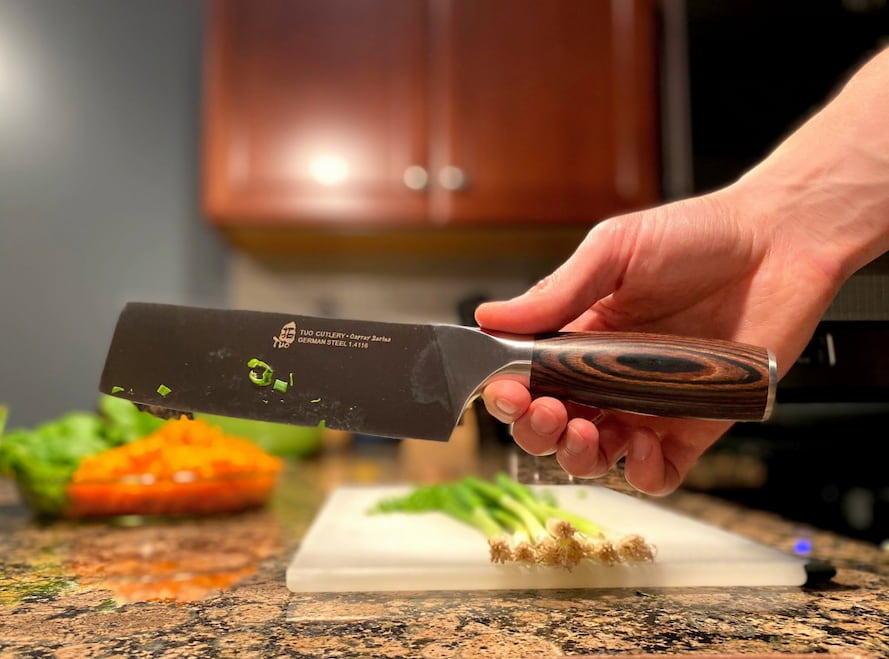
To put it plainly, you can cut smoothly with a nakiri blade and all it takes is making a straight smooth cut without having to rock, push and pull the knife. Although it may take some time for you to learn how to chop with it, once you learn, you’ll never want to go back. The benefits of this almighty knife are huge, but let’s have a look at its core benefits since they’re the ones that make this knife the first choice by amateur and professional chefs.
Even Thin Slices
Because of its nature and blade, this knife allows for thin and even cuts. With a knife of this kind, even the clumsiest amateur cook can cut thin slices. Being so great for uniform cuts, you can also use it for ribbon and julienne vegetables.
Cleaner Cuts
Because of its flat edge, this knife comes in contact with the cutting board when cutting the vegetable, resulting in cleaner cuts. In other words, you won’t have to deal with sticking vegetable pieces.
When in the search for a nakiri, make sure not to confuse it with the Chinese cleaver. They’re extremely similar with one difference, the cleaver is designed for cutting thick meat which doesn’t make it precise when cutting smaller and more delicate ingredients like vegetables. Cleaver is also heavier which makes it harder to manoeuvre.
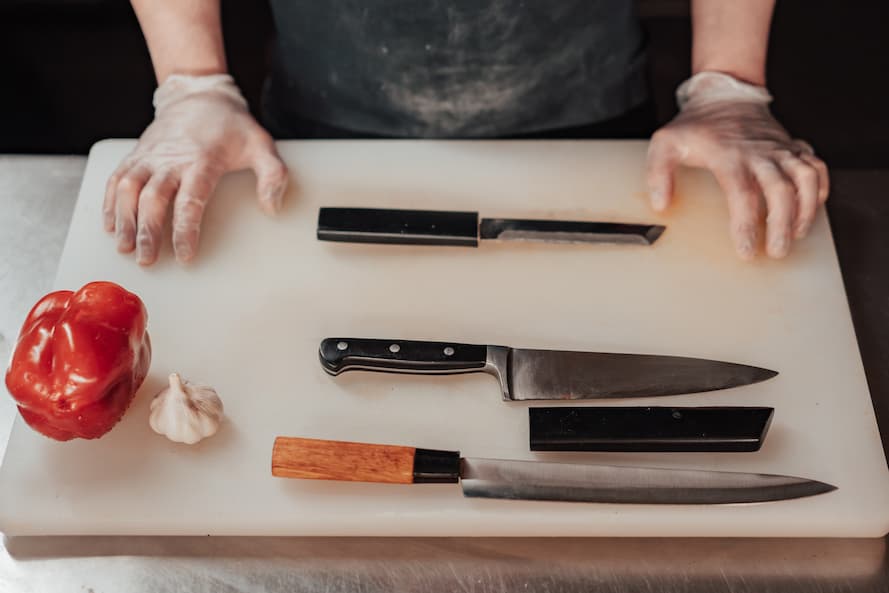
It’s said that the usuba knife also resembles a lot of the nakiri, with the main difference in its blade design and edge grind. Even though usuba knives also have a flat edge, they have a curved spine and a single bevel (sharpened only on one side) which makes them more suitable for professional chefs.
What Is a Santoku Knife?
Santoku knives have appeared in 1940 in Japan and they’re considered all-purpose types of knives. A knife of this kind has a straight edge with a subtle curve which enables cutting with a rocking motion as well. Even though this knife is known as a multipurpose knife, it’s said that it’s best for slicing and peeling delicate foods like vegetables, fruit, fish and cheese.
Which One Is Better – Nakiri or Santoku?
Truth is that both of these knives are good on their own, so having both of them in your knife collection would be amazing. However, when it comes to cutting vegetables precisely, make sure not to use santoku since it won’t provide you with even and thin slices. For this job, you should entirely rely on the other knife since this is its main purpose.
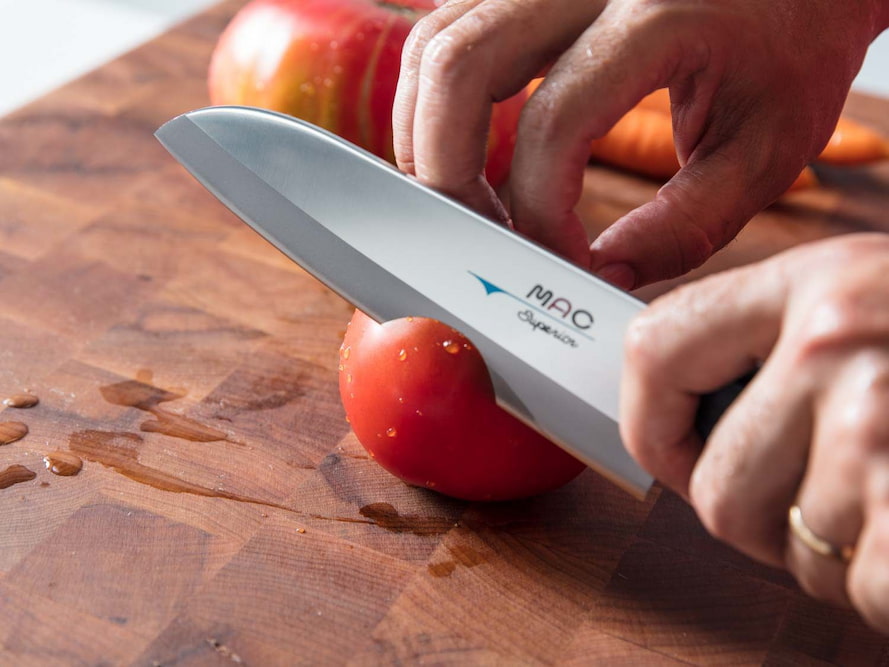
When in the search for the right Japanese-style knives of this kind, it’s of vital importance for you to choose the right blade thickness. If not sure what to choose, do online research and seek professional help. You can find one by turning to trusted stores that sell Japanese-style knives from reputable brands. Not only will they help you choose the right knife type and blade thickness, but they’ll also make suggestions in order to choose the right blade material.
Usually, these blades are made from carbon steel, powder steel, stainless steel, etc. For those of you who love displaying your knives on a knife display board, then you can always choose a stainless steel knife with pebble stone or nickel Damascus steel finish.
The choice of such knives is huge, just make sure to follow the manufacturer’s care instructions. Usually, these knives are handmade and aren’t dishwasher safe since the high temperature and moisture can seriously damage the knife’s steel, finish and handle. According to chefs, tossing a knife into the dishwasher is one of the quickest ways to ruin a knife.


